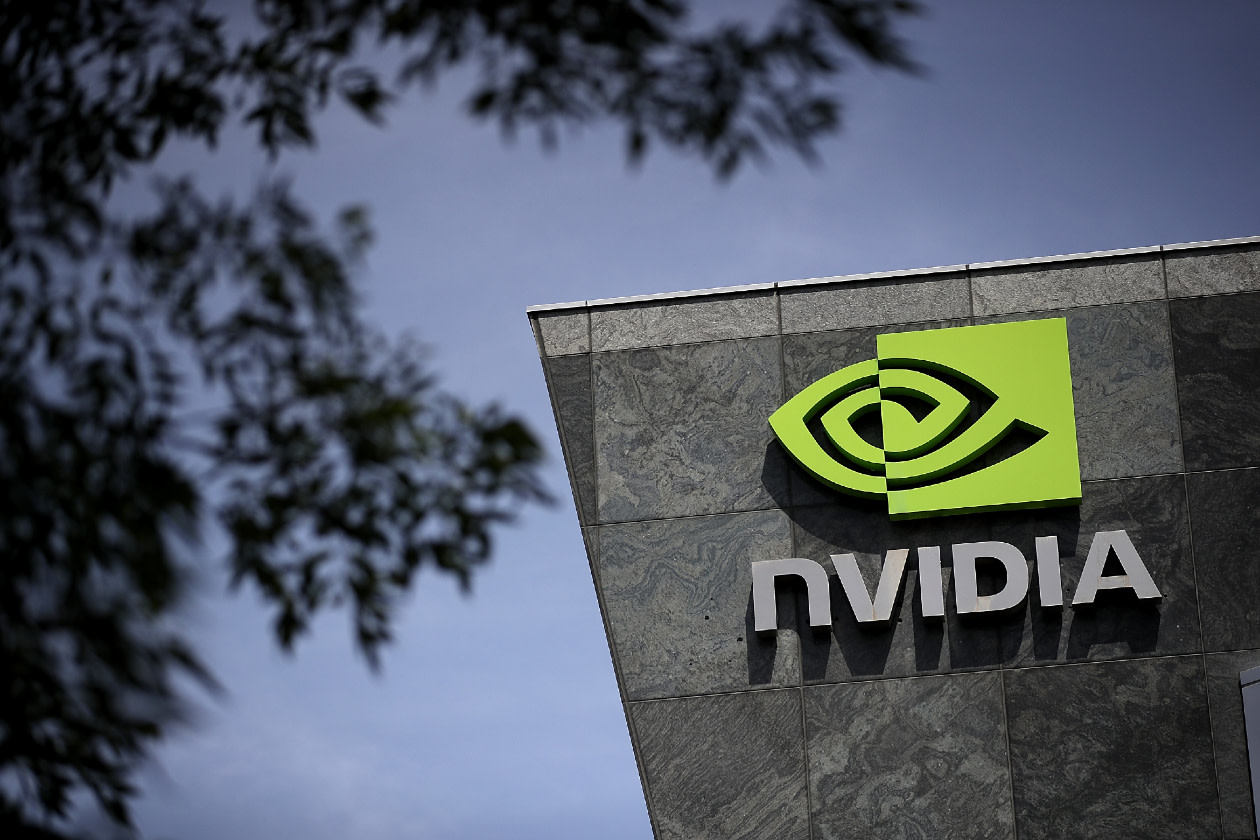Nvidia reported third-quarter revenue up 62% to $57.0bn, beating estimates by 4%. All divisions grew, with Data Center revenue up 66% to $51.2bn. Underlying operating profit of $37.8bn also rose by 62%.
Free cash flow increased by 32% to $22.1bn. Net cash, including leases, stood at $51.1bn at the end of the period.
For the fourth quarter, revenue is expected to be around $65.0bn.
Share buybacks totalled $12.5bn and a quarterly cash dividend of $0.01 per share was announced.
The shares were up 5.5% in pre-market trading.
Our view
Third quarter results delivered the goods and then some, a 4% beat on the top and bottom line came with a side of more good news in the form of a monster $65bn revenue guide for the fourth quarter. We were also pleased to get confirmation on the massive backlog of orders through the end of 2026. With that in mind, we think current market expectations for next year’s revenue and profits are too low.
Nvidia CEO Jensen Huang has been busy over the quarter. The group’s now a key partner in the UK’s AI plans, announced a $5bn investment in Intel, and, to cap it all off, formed a mega pact with OpenAI. The first two are nice but not dial-moving; the latter is a significant prize.
These deals, along with commentary on insatiable demand for the latest chip stacks, cement our view on Nvidia’s leadership position at a time when custom chips from tech giants and startups have raised some questions.
Key customers are exploring viable alternatives, at least on paper, as they seek more computing capacity and diversification away from a single supplier. The real question is how those options stack up in practice. Designs and promises of similar performance are one thing; track record at scale is another, and no-one matches Nvidia there.
Nvidia’s breadth remains underrated: a full data centre business spanning chips, software, networking, and more. Its chip architecture is evolving at a rapid pace, with new products coming out annually. Each evolution provides more computing power and, importantly, significantly better energy efficiency. Even if rivals can offer parts of the stack, Nvidia’s fully integrated solution will be hard to beat.
It’s quite remarkable to see a company of Nvidia’s size deliver over 60% revenue growth, especially when it’s essentially been shut out of what was once a core market, China. Sales of its deliberately reined-in chips are struggling to get the necessary approvals, and we’re less confident about a near-term solution than we have been in the past.
We think Nvidia is a best-in-class outfit, offers upside from a position of strength, and is one of our preferred ways to gain exposure to the AI theme. We see two key risks, first is an ongoing negative sentiment toward AI, which could weigh on the valuation. The second is its ability to supply the rapidly rising demand, any issues downstream could impact performance.
Environmental, social and governance (ESG) risk
The semiconductor sector is medium-risk in terms of ESG. Overall, this risk is managed adequately in Europe and North America but has considerable room for improvement in the Asia-Pacific region. Its reliance on highly-specialised workers means labour relations is one of the key risk drivers. Other risks worth monitoring include resource use, business ethics, product governance, and carbon emissions.
According to Sustainalytics, Nvidia’s management of material ESG risks is strong.
As the market leader in power- hungry GPU processors it’s recognised for paying close attention to the energy efficiency of its products. Business ethics concerns are addressed by Nvidia’s compliance committee, which comprises the CFO and several other senior managers. Additionally, a third-party hotline is available for both employees and third-party stakeholders to anonymously submit ethical concerns. Its human capital initiatives are also strong, which is reassuring given the talent gap in the industry. However, diversity amongst the workforce could still be improved.
The author owns shares in NVIDIA.
Nvidia key facts
All ratios are sourced from LSEG Datastream, based on previous day’s closing values. Please remember yields are variable and not a reliable indicator of future income. Keep in mind key figures shouldn’t be looked at on their own – it’s important to understand the big picture.
This article is original Hargreaves Lansdown content, published by Hargreaves Lansdown. It was correct as at the date of publication, and our views may have changed since then. Unless otherwise stated estimates, including prospective yields, are a consensus of analyst forecasts provided by LSEG. These estimates are not a reliable indicator of future performance. Yields are variable and not guaranteed. Investments rise and fall in value so investors could make a loss.
This article is not advice or a recommendation to buy, sell or hold any investment. No view is given on the present or future value or price of any investment, and investors should form their own view on any proposed investment.


